The road from Marrakesh to Essaouira with stops at Argan oil cooperatives – Morocco
Essaouira, the first day – Argan Oil
Short Description. I left Marrakesh and, on my way to Essaouira, I stopped at several argan oil cooperatives. In Essaouira, I stayed like a princess in an authentic and luxurious riad outside the medina.
Long Description.
In the morning, I left Marrakesh after the traffic calmed down and headed to Essaouira – the historic port at the Atlantic. Gentle brownish hills, quite arid but sprinkled with scattered argan forests, dominated the region. The argan forests of southwestern Morocco (declared a nature reserve – arganeraie) grew at the border with the Sahara and constituted a natural barrier against the extension of the desert. Even though they were not tall at all, the argan trees had rich crowns with many branches and leaves. Goats liked the argan fruits and climbed on the trees to eat them. On the side of the road, an argan tree was full of goats that looked at me with astonishment. Berbers climbed the goats in the tree to attract tourists. After that, they charged tourists for taking pictures of the goats or tried to sell them argan products.
At the Argane Beladi cooperative, I saw a wide range of argan-based products – from cosmetics and medicines to food. A little further, at Assous Argane, I witnessed the manual process of extracting argan oil from argan fruits. The process was included on the UNESCO intangible heritage list for the way these ancestral practices had been preserved.
Meanwhile, several women sat on the floor and exemplified the main stages of the traditional argan oil extraction process. A woman cracked each argan fruit shell with a sharp stone. Another woman used a manual rock grinder and thus grounded the lightly-roasted kernels into a thick brown oily liquid. Finally, and most importantly, another woman mixed the argan paste with warm water. Then she hand-kneaded it to bring pure, unfiltered oil up to the surface and filter it. Women peeled off the argan fruits only once and then roasted them to produce cosmetics. Whereas they peeled off and roasted the argan fruits twice to make food products. As a result, argan oil is the most expensive edible oil in the world ($300 per liter), and a liter of oil requires 20 hours of manual labor.
At Afous Argan cooperative, I tasted bread with argan honey, almond butter, and spreadable amlou paste (a mix of argan oil, honey, and almonds). A nice Moroccan woman who worked at the cooperative insistently smiled at me. Ultimately, she convinced me to buy an eye-contour cream with organic argan oil and a small jar of amlou almond paste.
In Essaouira, I had booked a room at Riad Salmiya Dune, an authentic riad located outside the medina. On the ground floor, the riad had an inner courtyard surrounded by arches, with a rippling fountain and a decorative, exotic tree in the middle. At the top, a glass skylight covered the courtyard, so that it couldn’t rain inside the patio. On the upper floor, my room had a light-beige tadelakt finishing, a big wrought-iron double bed, antique furniture, and modern paintings with Berbers wearing turbans. The room had a shared bathroom with brown, slightly-iridescent tadelakt finishing on walls, sink, and bathtub.
In the afternoon, I had pastillas with fish and avocado-orange juice at Café Nadawi’s on the corner of the street where my riad stood. As soon as I reached the ocean, the fish abundantly appeared on the local menus.
Essaouira, the second day – totally unexpected weather
Short Description. I crossed the new town and, in the medina, I went to Skala de la Ville, Sidi Mohammed Ben Abdallah Museum, Rabbi Haim Pinto Synagogue, and Skala du Port. A heavy rain caught me on the way home.
Long Description
At Riad Salmiya Dune, the French owners served a generous and hearty breakfast (tea, bread, pancakes, different fruit jams, cake, the customary melted cheese). I talked to a German couple who stayed in another room in the riad and thus found out he had gotten a 300-Dirham fine for speed driving.
White or light-hued houses, with porticoes on the ground floor, lined the streets of the new city. I passed a red-pavement square bordered by buildings on four sides and a few isolated palm trees. Then I walked down a wide boulevard of modernist influence along the ocean promenade. The boulevard featured a combination of French architecture and Arabic influences, as well as the ocean-like blue color for gates and shutters. Meanwhile, a wind (taros) blew continuously throughout the city – the reason why Essaouira was nicknamed the ‘windy city of Africa’. As a result, palm trees bent by this wind lined the deserted beach. Unless you could stay on the beach, a camel ride was always a choice though.
The entrance gate to the medina sat opposite Mohammed V Boulevard. Bab es-Sebaa, a red gate with decorative finishing of apparent stone, was continued with crenelated fortifications surrounding the medina. After Morocco opened up to the rest of the world in the 17th century, a French architect designed the medina in Essaouira (listed as a UNESCO site) according to the principles of the European military architecture. As a result, the medina featured fortification walls, ditches, and bastions specific to the Vauban-type fortresses in Europe.
Essaouira was a remarkable example of a fortified maritime city from the 18th century and an important trading center at the Atlantic. Throughout history, it had been an international port (called ‘the Timbuktu port’) that connected Morocco and sub-Saharan Africa with Europe and the rest of the world. The European principles influenced the North-African medina of Essaouira more than other Moroccan medinas (featuring a labyrinth of streets, alleys, and gangways). That is to say, the urban planning in Essaouira featured well-defined public spaces, main commercial streets, with a carefully designed perspective (minaret, tower).
The main streets in the medina were wide enough for cars to enter, but only residents’ cars had access there. Several-floor houses had animated blue gates and shutters, sometimes with Arab-ornament frames. Berber colorful carpets covered dark and deserted gangways. A Moroccan holding a tea tray with three tea glasses crossed the street – something popular to see in the medina. Ave de l’Istiqlal, packed out with all sorts of merchandise, ran through the medina from Bab Doukkala to Bab al-Minzah.
Blue, the emblematic color of port cities, dominated almost all entrances, shutters, and window frames. Sometimes, meticulous stuccoes or colorful mosaics (zellij) doubled these blue-dominated elements. In addition to that, gates built across the street created vaulted passageways here and there. A man asked me why was I taking so many pictures and where I come from. When I said I was an architect, he complained about how difficult it was to restore houses in the medina.
Lean cats squeezed fearfully under motorbike wheels or hid in dark corners. Narrow, winding streets in the medina managed to break the winds blowing powerfully throughout the city. On a pedestrian street, merchants were sitting in front of their shops, waiting for potential customers. Overlooking the sea, Skala de la Ville was one of the main defense bastions in the medina. It had many entrance ramps, platforms, and corridors with sea-oriented cannons. Unfortunately, on the other side of its walls, heaps of rubbish filled the residual space between fortifications and the sea. While I was strolling on the massive walls of the bastion, the sea got agitated and thick grey clouds were quickly approaching the city.
Housed in a traditional merchant dwelling, the Sidi Mohammed Ben Abdallah Museum stood as the main museum in the city. It had a large central staircase, with blue railings, which climbed from the double-arched inner courtyard to the second floor with loggia. The museum exhibited weapons, silverware, folk costumes, and musical instruments (squared guitars – gnaoua and drums – hmadcha).
In the 19th century, Essaouira also included a new Jewish quarter (mellah) as an extension to the medina. When Jews had come to the city, the sultan had ordered the construction of a separate quarter for them. All of a sudden, I noticed a poorly-dressed man with red eyes who followed me through the mellah. I stopped at a store right away. There, I chatted with the owner until the man with red eyes got lost in the crowds. After that, I immediately entered the Rabbi Haim Pinto Synagogue – a small building with walls painted in blue or tiled with decorative-diamond faience.
From Bab Doukkala, I returned on the main pedestrian street flanked by collonades packed-out with merchandise. After passing the Kasbah Mosque, I headed to the port and shortly stopped in Moulay Hassan Place – a square with cozy pavement terraces and restaurants. Next to the square, the fish market offered a wide range of fish – all colors, sizes, and origins. You could buy the fresh fish and then grill it on a barbecue in the street or at home.
At the end of the pier, I reached Skala du Port – a Portuguese bastion overlooking the sea. Fat, fearless seagulls heroically resisted the harsh wind on the pier. I would have wanted to have lunch at a restaurant in the medina but on the way back from the bastion it started to rain cats and dogs. I soon was wet through. Everybody flagged down a taxi, so I couldn’t find any available taxi to get to the riad. Eventually, I left the medina on foot and hoped to find a cab on my way home.
When I crossed the streets, the water was half-meter deep, almost up to my knees. The city’s sewage couldn’t handle such an enormous quantity of water. As a result, when I arrived at the riad, I was soaking wet. My sneakers and clothes were completely wet, too. And I even had to dry the sheets of my notebook one by one. After that, I took a hot bath in the luxurious bathtub with tadelakt finishing and warmed a bit. Then I spent the evening in the riad and ordered food from the corner cafe.
At night, I put my sneakers and pants near a heated radiator borrowed from the shared bathroom. During the night, though, I had to wake up to turn them on both sides every two hours. In the morning, the sneakers had almost dried up. The pants had dried, too. But they had burnt in a few places (the rain sacrifice in Essaouira) because I placed them too close to the radiator.
If you want to read more about the road trip through Morocco, here are all the Travelogues from Morocco (x21).
Have you been to Morocco or plan to go there? Leave a comment below this post and tell me what you liked in Morocco or what you want to see there.
Want to subscribe to my travelogues? Just leave your email in the subscription form below, and you’ll be notified when I publish a new post.

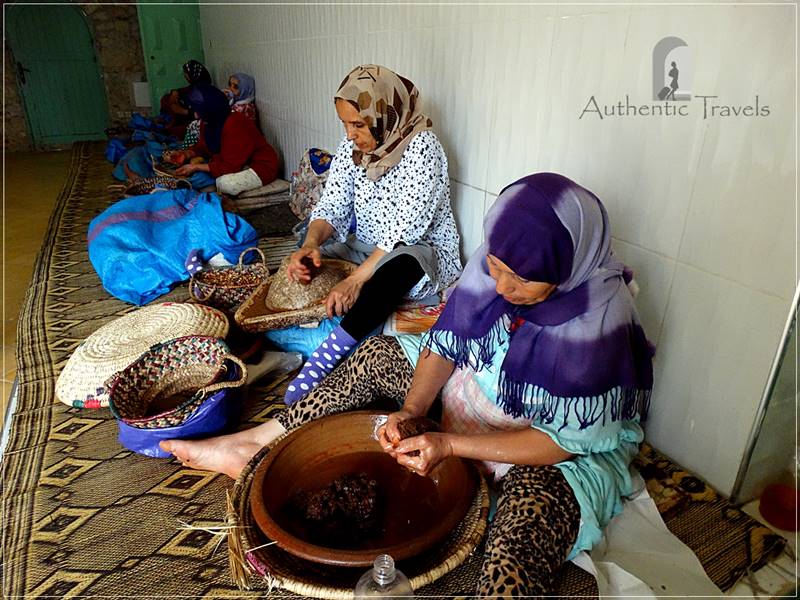

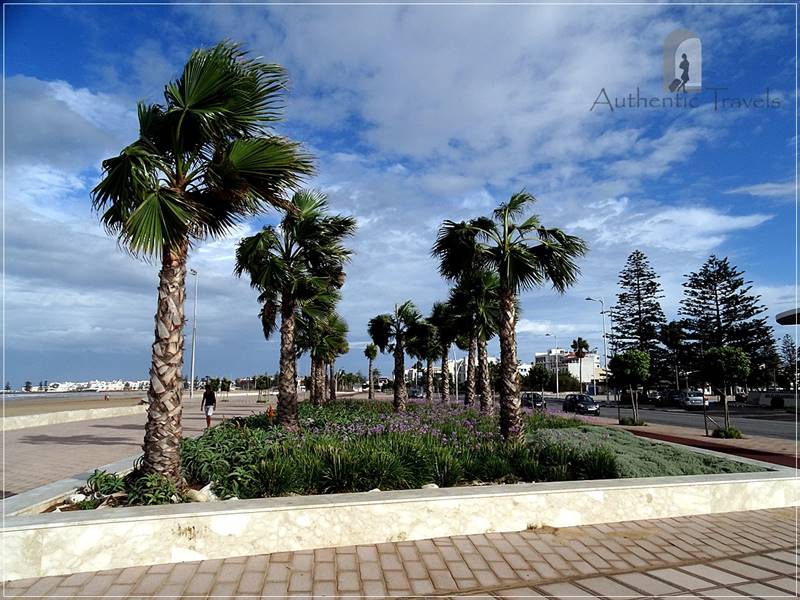
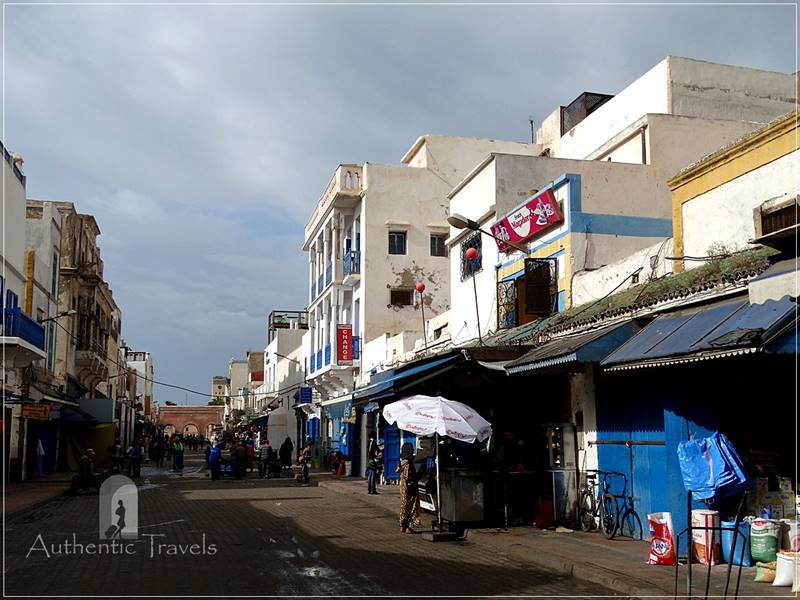
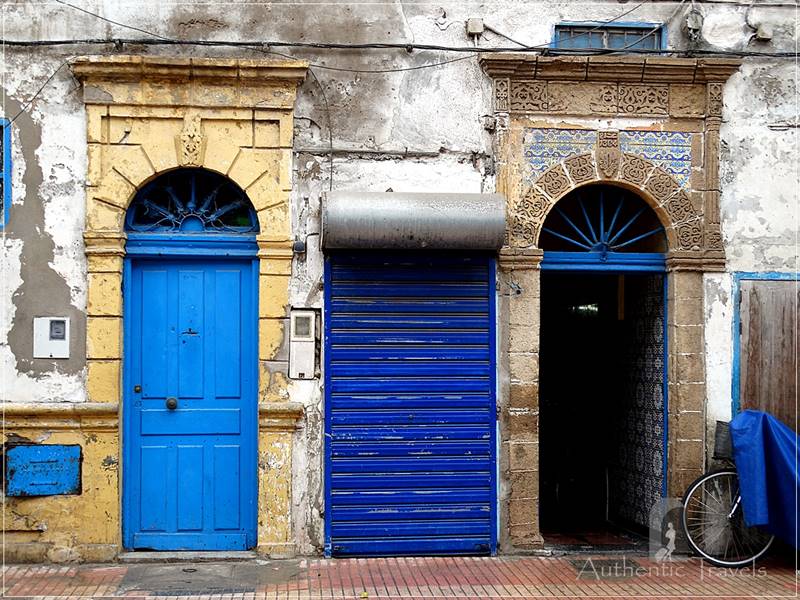

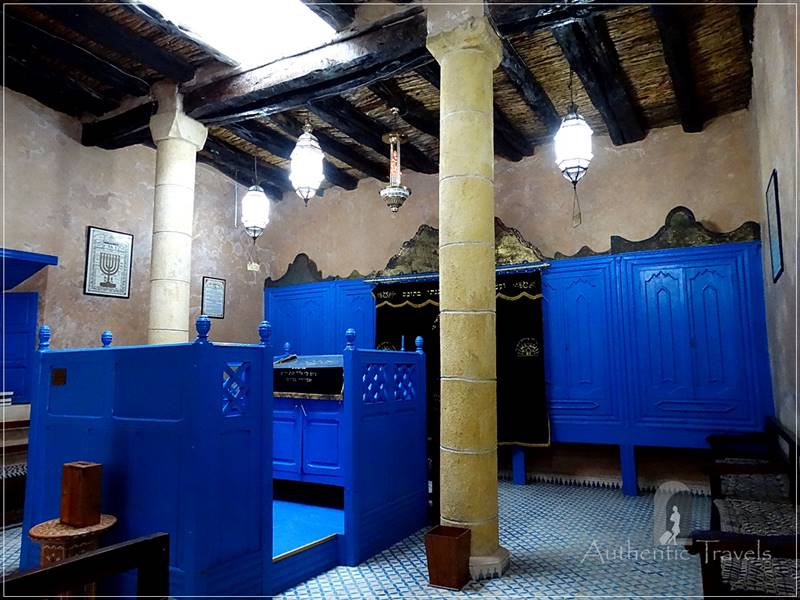
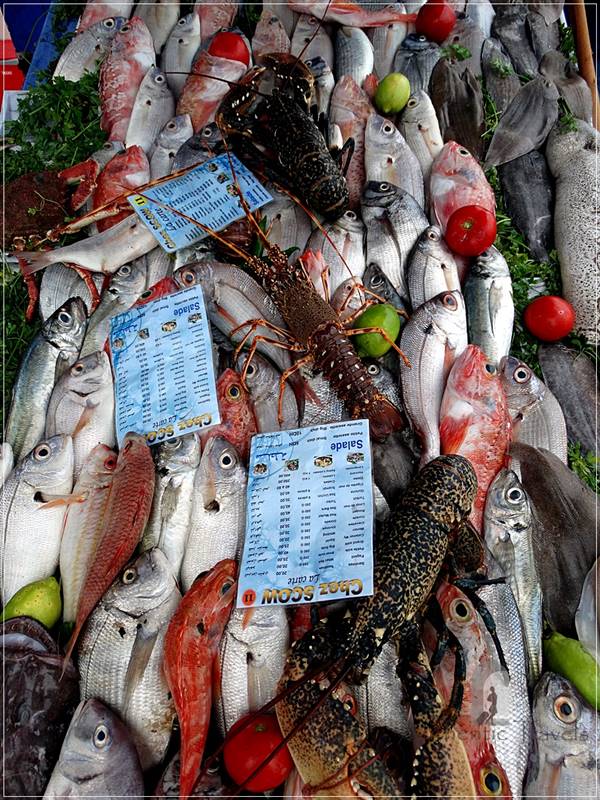
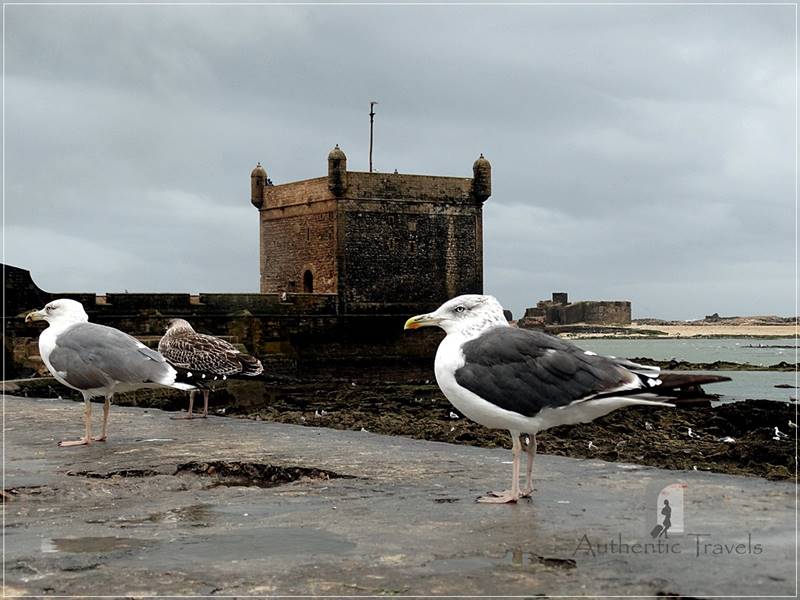
This was so informative! I had no idea argan oil was edible and that it was such a labour intensive activity to make it. I also never saw a photo of goats in a tree before, so that’s pretty neat. Too bad you weren’t able to find a taxi in the rain, hope you were able to dry out and keep exploring.
After that rain I took a hot bath and was just fine.
I’m loving your Morocco travels! I never knew how laborous processing argan was! I hope the women get a fair wage for their work since $300 per liter is a lot of money. Essaouira looks like a fabulous place to walk around and explore. Would love to see the blue decor and architecture in the area. Do you think one day in Essaouira is enough time to see the main tourist attractions?
I spent one day in Essaouira, from morning to afternoon until that stupid heavy rain started.It is enough but two days would be best, it all depends on what else you want to visit in Morocco and and you want to see.
I actually had no idea that you could eat Argan oil! What does it taste like to you? Would you have it again?
Yes, it is very tasty (like the olive oil). And the amlou paste I described in the text is very delicious.
We went to Essaouira a few years ago and loved it! I love that these cooperatives exist for producing argan oil. There are so many fake versions there, especially in the tourist shops. The weather changed drastically for us too!
Yes, my memories about that storm are pretty intense.
I’ve never been there but reading all about Morocco is so enticing. I hope, we can someday. It is good to learn about argan oil. Lol. The animals it is my first time to see one that really climb the trees aside from monkeys, bats, and squirrels.
Those goats were put there by Berbers to attract tourists. But the goat are good climbers. Maybe they don’t climb to the top of the tree though.
Nice description of the argan business. I saw a few times photos of goats climbed on argan trees, but I didn’t know that it was also a tourist affair! Your stay at Riad Salmiya Dune looks great indeed!
It must be amazing to witness how the organ oil is extracted and processed
It was a very interesting process indeed.
I was a huge fan of Essaouira actually, and would venture to say that it’s one of the most underrated cities in the whole country. It sounds like you dug beneath the surface here, and got the story of some of the local people, so good for you!
I love exploring countries more in depth, the usual touristy places are interesting but only a way to see a country in a rush.
What are pastillas? We have pastillas in the Philippines too and it is a milky candy dessert. Did you ever find out why the man was following you? Is Marrakesh safe?
Marrakesh is safe if you don’t venture in weird neighborhoods at night. I don’t know why that man was following me in Essaouira. Pastillas is a Spanish dish and here in Morocco was brought by colonists.